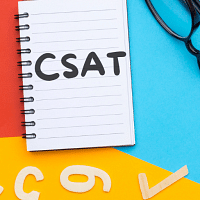UPSC Exam > UPSC Questions > What was used to dig the earth for turning th...
Start Learning for Free
What was used to dig the earth for turning the soil and planting seeds
- a)Digger
- b)Axe
- c)Plough
- d)Plaster
Correct answer is option 'C'. Can you explain this answer?
| FREE This question is part of | Download PDF Attempt this Test |
Verified Answer
What was used to dig the earth for turning the soil and planting seeds...
A plough is a tool or farm implement used in farming for initial cultivation of soil in preparation for sowing seed or planting to loosen or turn the soil. ... In modern use, a ploughed field is typically left to dry out, and is then harrowed before planting.
View all questions of this test
Most Upvoted Answer
What was used to dig the earth for turning the soil and planting seeds...
The correct answer is option 'C' - Plough.
A plough is an agricultural tool that is used to dig the earth, turn the soil, and prepare it for planting seeds. It has been an essential farming implement for centuries and is still widely used in many parts of the world today. Let's explore the significance and working of a plough in more detail.
The Significance of the Plough:
1. Soil Preparation: The primary purpose of using a plough is to prepare the soil for planting crops. It helps in breaking up the compacted soil, removing weeds, and turning the soil to expose the nutrient-rich layers.
2. Seedbed Preparation: By creating a well-tilled seedbed, a plough ensures that the seeds have a suitable environment for germination and growth. It loosens the soil, making it easier for the roots to penetrate and access water and nutrients.
3. Weed Control: Ploughing also helps in controlling weeds. By turning the soil, it uproots existing weeds and buries their seeds deeper, preventing them from sprouting and competing with the planted crops.
4. Soil Aeration: Ploughing promotes better soil aeration, which is crucial for root respiration and microbial activity in the soil. It improves the overall health of the soil and enhances its fertility.
Working of a Plough:
1. Design: A plough typically consists of several parts, including a ploughshare, a moldboard, a beam, handles, and a share. The ploughshare is the cutting edge that cuts through the soil, while the moldboard is the curved metal plate that turns the soil over.
2. Attachment: The plough is usually attached to a draft animal, such as a horse or an ox, which provides the pulling force required to move the plough through the soil.
3. Cutting and Turning: As the animal pulls the plough forward, the ploughshare cuts through the soil, and the moldboard turns it over. This action helps in breaking up clumps, burying organic matter, and creating furrows for planting seeds.
4. Adjustments: The depth and angle of the plough can be adjusted based on the type of soil, crop, and desired tilling depth. This flexibility allows farmers to tailor the ploughing process to their specific requirements.
In conclusion, a plough is an essential tool used for digging the earth, turning the soil, and preparing it for planting seeds. It plays a crucial role in soil preparation, seedbed creation, weed control, and soil aeration. The design and working of a plough allow farmers to efficiently cultivate their land and maximize crop yields.
A plough is an agricultural tool that is used to dig the earth, turn the soil, and prepare it for planting seeds. It has been an essential farming implement for centuries and is still widely used in many parts of the world today. Let's explore the significance and working of a plough in more detail.
The Significance of the Plough:
1. Soil Preparation: The primary purpose of using a plough is to prepare the soil for planting crops. It helps in breaking up the compacted soil, removing weeds, and turning the soil to expose the nutrient-rich layers.
2. Seedbed Preparation: By creating a well-tilled seedbed, a plough ensures that the seeds have a suitable environment for germination and growth. It loosens the soil, making it easier for the roots to penetrate and access water and nutrients.
3. Weed Control: Ploughing also helps in controlling weeds. By turning the soil, it uproots existing weeds and buries their seeds deeper, preventing them from sprouting and competing with the planted crops.
4. Soil Aeration: Ploughing promotes better soil aeration, which is crucial for root respiration and microbial activity in the soil. It improves the overall health of the soil and enhances its fertility.
Working of a Plough:
1. Design: A plough typically consists of several parts, including a ploughshare, a moldboard, a beam, handles, and a share. The ploughshare is the cutting edge that cuts through the soil, while the moldboard is the curved metal plate that turns the soil over.
2. Attachment: The plough is usually attached to a draft animal, such as a horse or an ox, which provides the pulling force required to move the plough through the soil.
3. Cutting and Turning: As the animal pulls the plough forward, the ploughshare cuts through the soil, and the moldboard turns it over. This action helps in breaking up clumps, burying organic matter, and creating furrows for planting seeds.
4. Adjustments: The depth and angle of the plough can be adjusted based on the type of soil, crop, and desired tilling depth. This flexibility allows farmers to tailor the ploughing process to their specific requirements.
In conclusion, a plough is an essential tool used for digging the earth, turning the soil, and preparing it for planting seeds. It plays a crucial role in soil preparation, seedbed creation, weed control, and soil aeration. The design and working of a plough allow farmers to efficiently cultivate their land and maximize crop yields.
Free Test
FREE
| Start Free Test |
Community Answer
What was used to dig the earth for turning the soil and planting seeds...
Plough was used to dig the earth for turning the soil and planting the seeds because it helps to loosen up the soil and provide aeration.Thus multiplication of microbes which is essential for the plant growth will take place.So,better yield of crops.
Attention UPSC Students!
To make sure you are not studying endlessly, EduRev has designed UPSC study material, with Structured Courses, Videos, & Test Series. Plus get personalized analysis, doubt solving and improvement plans to achieve a great score in UPSC.

|
Explore Courses for UPSC exam
|

|
Similar UPSC Doubts
What was used to dig the earth for turning the soil and planting seedsa)Diggerb)Axec)Ploughd)PlasterCorrect answer is option 'C'. Can you explain this answer?
Question Description
What was used to dig the earth for turning the soil and planting seedsa)Diggerb)Axec)Ploughd)PlasterCorrect answer is option 'C'. Can you explain this answer? for UPSC 2024 is part of UPSC preparation. The Question and answers have been prepared according to the UPSC exam syllabus. Information about What was used to dig the earth for turning the soil and planting seedsa)Diggerb)Axec)Ploughd)PlasterCorrect answer is option 'C'. Can you explain this answer? covers all topics & solutions for UPSC 2024 Exam. Find important definitions, questions, meanings, examples, exercises and tests below for What was used to dig the earth for turning the soil and planting seedsa)Diggerb)Axec)Ploughd)PlasterCorrect answer is option 'C'. Can you explain this answer?.
What was used to dig the earth for turning the soil and planting seedsa)Diggerb)Axec)Ploughd)PlasterCorrect answer is option 'C'. Can you explain this answer? for UPSC 2024 is part of UPSC preparation. The Question and answers have been prepared according to the UPSC exam syllabus. Information about What was used to dig the earth for turning the soil and planting seedsa)Diggerb)Axec)Ploughd)PlasterCorrect answer is option 'C'. Can you explain this answer? covers all topics & solutions for UPSC 2024 Exam. Find important definitions, questions, meanings, examples, exercises and tests below for What was used to dig the earth for turning the soil and planting seedsa)Diggerb)Axec)Ploughd)PlasterCorrect answer is option 'C'. Can you explain this answer?.
Solutions for What was used to dig the earth for turning the soil and planting seedsa)Diggerb)Axec)Ploughd)PlasterCorrect answer is option 'C'. Can you explain this answer? in English & in Hindi are available as part of our courses for UPSC.
Download more important topics, notes, lectures and mock test series for UPSC Exam by signing up for free.
Here you can find the meaning of What was used to dig the earth for turning the soil and planting seedsa)Diggerb)Axec)Ploughd)PlasterCorrect answer is option 'C'. Can you explain this answer? defined & explained in the simplest way possible. Besides giving the explanation of
What was used to dig the earth for turning the soil and planting seedsa)Diggerb)Axec)Ploughd)PlasterCorrect answer is option 'C'. Can you explain this answer?, a detailed solution for What was used to dig the earth for turning the soil and planting seedsa)Diggerb)Axec)Ploughd)PlasterCorrect answer is option 'C'. Can you explain this answer? has been provided alongside types of What was used to dig the earth for turning the soil and planting seedsa)Diggerb)Axec)Ploughd)PlasterCorrect answer is option 'C'. Can you explain this answer? theory, EduRev gives you an
ample number of questions to practice What was used to dig the earth for turning the soil and planting seedsa)Diggerb)Axec)Ploughd)PlasterCorrect answer is option 'C'. Can you explain this answer? tests, examples and also practice UPSC tests.

|
Explore Courses for UPSC exam
|

|
Signup for Free!
Signup to see your scores go up within 7 days! Learn & Practice with 1000+ FREE Notes, Videos & Tests.



















